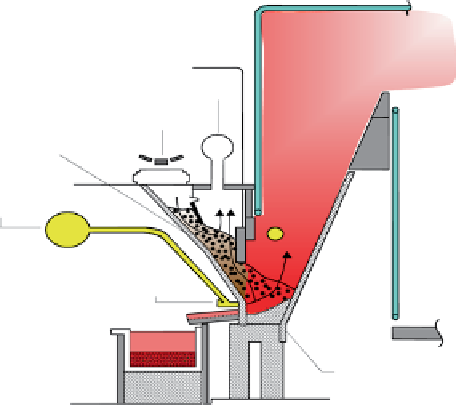Environmental Engineering Reference
In-Depth Information
Fig. 13.7
Schematic illustra-
tion of MF furnace
water wall tube
by-pass duct
conveyor
coking zone
hot air
boiler
tuyere
settler
smelting zone
13.4
E-scrap Recycling
13.4.1
Current Situation
We now turn to the potential for the recovery of metals from 'E-scrap' or 'Waste
Electrical and Electronic Equipment (WEEE)' in Japan (Shiratori and Nakamura
2007
). An approximate estimate of the amounts of metals in WEEE in Japan is
shown in Table
13.2
. Iron and steel scrap is of course, highest value and second
is aluminum. Copper scrap in WEEE was estimated by Shiratori and Nakamura
(
2007
) at around 150,000 t, which also has a good potential to be recycled. Amounts
of precious metals like gold and silver are less certain, but it is considered that a few
tons of these could be recovered if all WEEE in Japan were collected.
There are the following three types of actions for recycling of WEEE in Japan.
1. Basic Laws
− Home Appliance Recycling Law (air conditioner, washing machine, TV-set,
refrigerator, clothes drier). This covers about 1/3 of all WEEE in Japan, and
over 6 kg/capita of WEEE have been treated under this scheme.
2. Voluntary actions by manufacturers
− There is a 'Mobile Recycling Network' for recycling mobile phones which
received 7,343,000 units (total of 696 t in 2010); this comprised about 20 %
of the units sold in 2010.
− The 'PC-3R' scheme for computers handled 367,564 units in 2010; this was
less than 10 % of the units sold in 2010.
3. Uncontrolled reuse and recycle, which includes:
− Reuse as secondhand goods (in Japan and Southeast Asia).
− Export to Southeast Asia (for recycling).
− Illegal Disposal.

